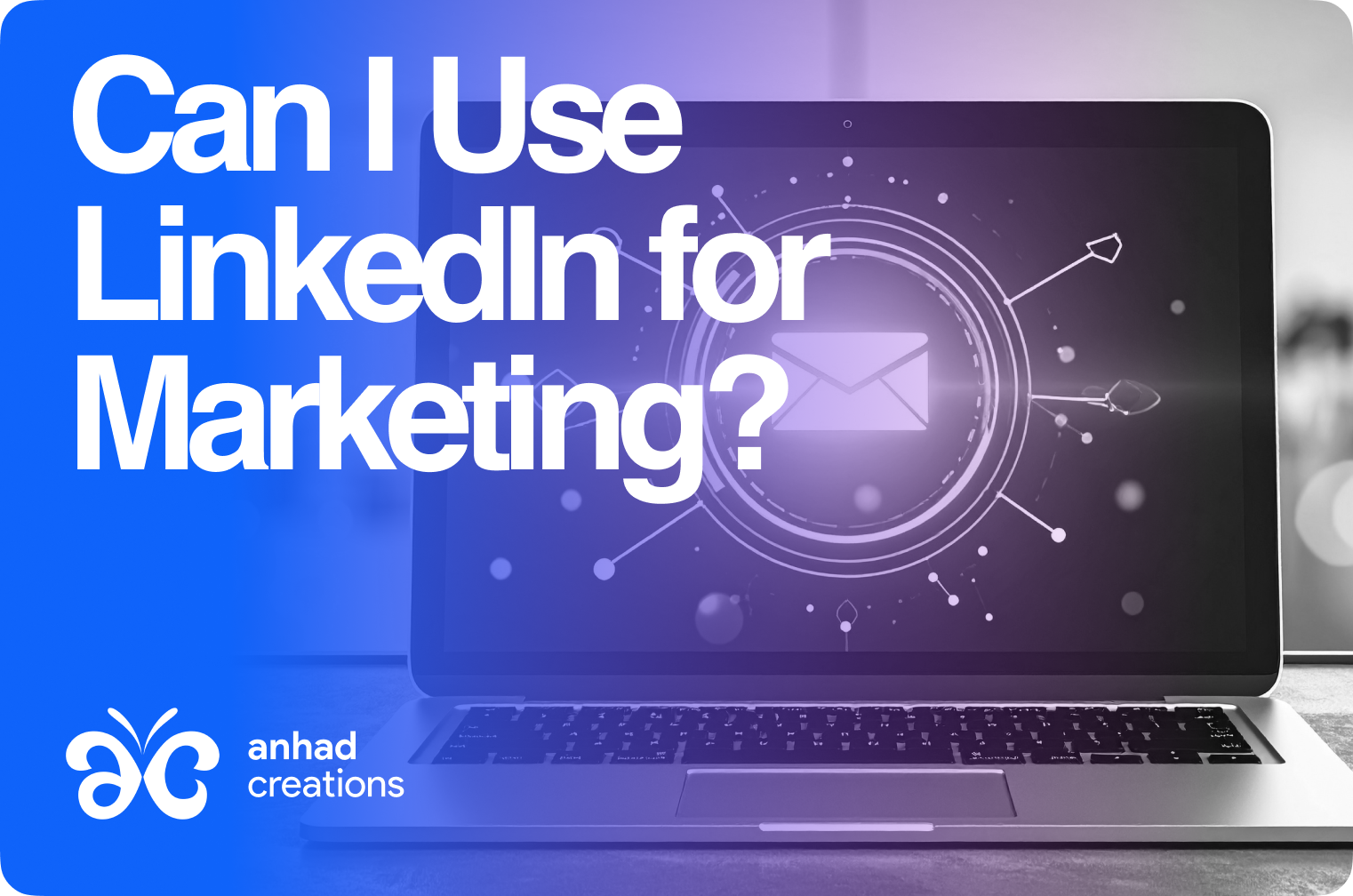Can I Use LinkedIn for Marketing? A Guide for Small Businesses & Product Sellers
You don’t need to be a large enterprise or a marketing agency to thrive on LinkedIn. In fact, many small businesses and solo entrepreneurs are using it to grow faster than they would on other platforms. Whether you’re a freelancer, an early-stage founder, or a product seller, LinkedIn gives you direct access to decision-makers, potential customers, and brand advocates all in one place.
Let’s explore how you can use LinkedIn to drive sales, build relationships, and scale your business even on a modest budget.
4.1 Can LinkedIn Be Used for Marketing?
Absolutely. LinkedIn is not just a place to showcase your resume, it’s a platform for building your brand and promoting your business with clarity and authenticity.
You can use it to:
- Tell the story behind your business or product
- Share progress, wins, and learnings from your journey
- Build visibility by interacting with your audience
- Promote content that educates or solves a problem
With regular activity, you’ll begin to attract attention from exactly the kinds of people who are most likely to support or buy from you.
4.2 Is LinkedIn a Good Platform for Marketing?
If your audience includes professionals, business owners, or corporate buyers then yes, it’s one of the best platforms for your marketing efforts.
Why?
- Trust: People treat LinkedIn content more seriously than on other platforms.
- Longevity: Posts here often stay visible for 3–5 days.
- Organic growth: Thoughtful, valuable content can reach thousands through likes, shares, and comments without needing to go viral.
LinkedIn works especially well for B2B service providers, coaches, consultants, and SaaS companies seeking high-intent leads.
4.3 Is LinkedIn Used for Advertising?
Yes, and it’s a smart platform for precise B2B advertising.
With tools like Campaign Manager, you can:
- Create Sponsored Content or Video Ads
- Target users based on job title, company size, industry, and more
- Use Lead Gen Forms to collect contact info without users leaving LinkedIn
- Track performance using built-in analytics
While it’s more expensive per click, as explained in last blog
What Are LinkedIn Marketing Services? Tools, Pricing & Myths Busted
LinkedIn Ads offer better targeting and higher-quality leads compared to broader platforms.
4.4 Can You Use LinkedIn to Sell Products?
While LinkedIn isn’t a shopping platform, it’s highly effective for selling to professionals – especially if your product solves a work-related problem.
Here’s how to sell on LinkedIn:
- Share how your product helps real people (testimonials, case studies)
- Tell the “why” behind what you’ve built
- Use strategic content and storytelling to spark interest
- Link out to platforms like Shopify, Gumroad, or your website
Think of LinkedIn as a place to start meaningful conversations not just make transactions.
4.5 What Happens When You Get 1,000 Connections on LinkedIn?
Reaching 1,000+ connections builds social proof and gives your posts more momentum in the algorithm. It also unlocks:
- Creator Mode tools: Newsletters, LinkedIn Live, deeper analytics
- Search visibility: Appear more in searches
- Higher engagement: More visibility = more likes, comments, and shares
Tip: Focus on quality over quantity. Send personalized invites and engage in comments to grow your network intentionally.
4.6 Is LinkedIn Good for Small Businesses?
Without a doubt.
LinkedIn levels the playing field by helping small business owners:
- Connect with clients, suppliers, and collaborators
- Build brand visibility without huge ad budgets
- Establish thought leadership through organic content
- List services and get inbound leads via the “Open for Business” tool
Whether you’re running a design studio, SaaS tool, coaching practice, or handmade shop, LinkedIn helps you grow authentically.
What’s Next?
Looking to take your B2B game to the next level-with smart funnels, automation, and scalable strategies?
Explore what works (and what doesn’t) in next blog
LinkedIn Marketing for B2B Brands – Strategy, Funnels, and Tools
